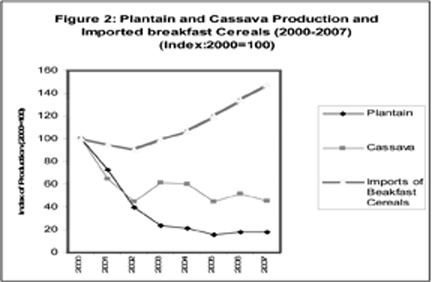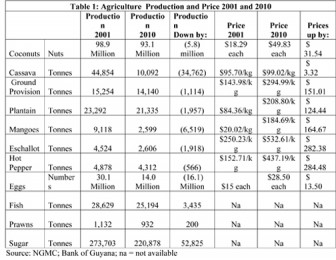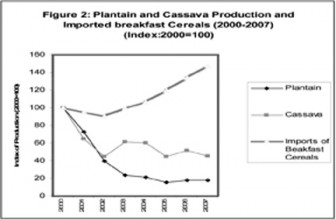Dear Editor,
Burnishing President Jagdeo’s image, Dr. Prem Misir engages in a misleading effort aimed at embellishing President Jagdeo’s contribution to Guyana’s agriculture. In his SN letter dated October 20, 2011 and captioned, “Because of Jagdeo, Guyana is better positioned on food security”, Dr. Misir writes, among other things, that President Jagdeo has introduced new lands to step up food production, as part of the “Grow More Food Programme”. In addition, Dr. Misir stressed President Jagdeo’s attempt to improve food security and reduce the food import bill in Guyana and the Caribbean.
Undoubtedly, these are all lofty goals, but the data published by the New Guyana Marketing Corporation (NGMC) and the Bank of Guyana indicate that with the exception of rice, pineapples, bora, poultry meat and prawns production, which increased modestly, agriculture output in Guyana has declined for several years for several crops. At the same time, the average retail prices for agriculture commodities have increased for several years for several crops; and food imports into Guyana have been increasing for several years.
More specifically, between 2001 and 2010, cassava production declined by 34 thousand tonnes; egg production declined by 16.1 million eggs; sugar production declined by over 52 thousand tonnes; coconuts declined by 5 million nuts; and declines were also recorded in ground provision, plantain, mangoes, eschallot, hot-peppers, fish and prawns (Table1). Moreover, and as a corollary to falling production, agriculture prices have been increasing and this caused a much larger share of household income to be allocated to the family food budget and less so for other essentials such as electricity, transportation, water, education and savings, among other necessities. Remittances covered some of this expenditure boosting foreign exchange reserves.
More troubling has been the increasing importation of breakfast cereals at a time when plantains and cassava production have been declining (Figure 2).
Source: Derived from FAO Stats: FAO Stats: http://faostat.fao.org/site/342/default.aspx; Bank of Guyana Annual Report 2009, Table 11-1
This outcome clearly implies that Guyana is becoming more dependent on imported food and less so on domestic supplies, as agriculture shrinks as a share of the economy. It also confirms that the grow more food programme is not working and that food security in Guyana is not a goal that can be achieved under President Jagdeo’s term in office, which ends in a few weeks.
Dr. Misir also blamed CARICOM officials for the current decline in agriculture in the region at a time when President Jagdeo has been given the mandate to grow the agriculture portfolio in the region, using the Jagdeo Initiative. Again, no progress on the ground, for spending money on infrastructure and none on farm technology, inputs and marketing as well as not providing short, medium and long-term credit are misguided efforts. In view of the evidence presented here, Dr. Misir should not spin.
Yours faithfully,
C. Kenrick Hunte








